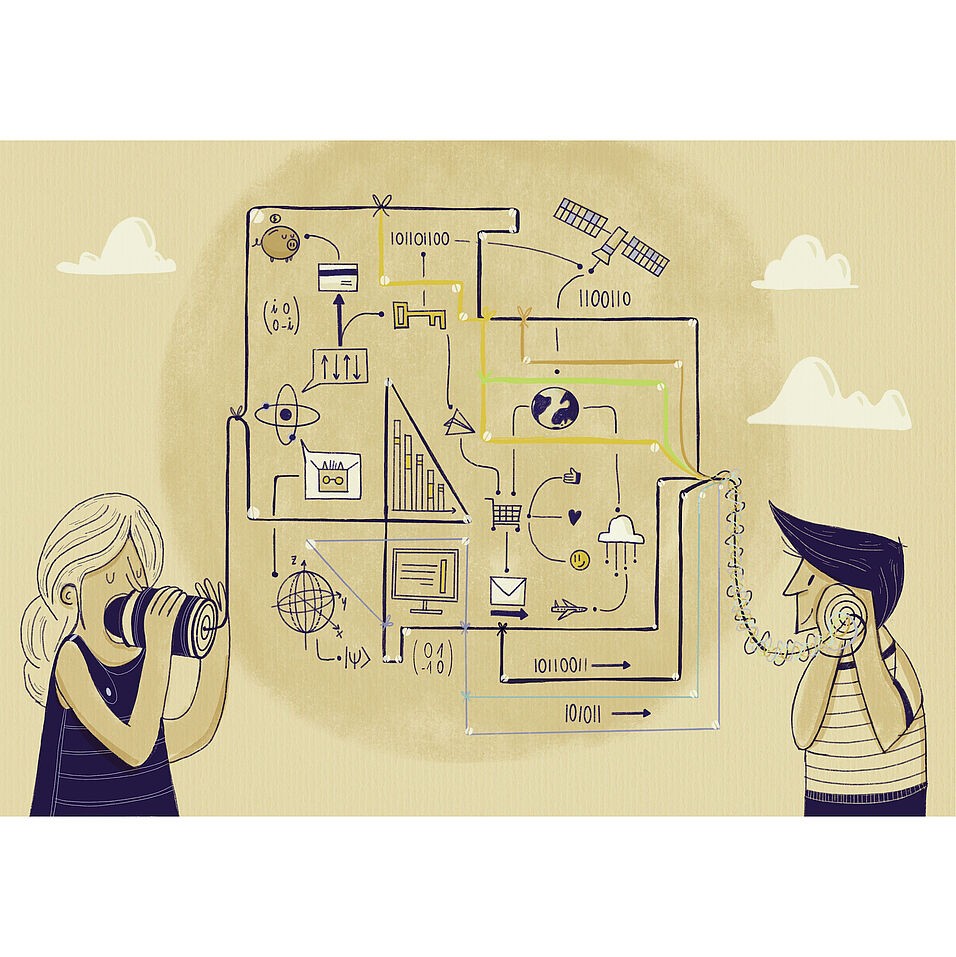A collaboration between the Universities of Hong-Kong, Grenoble and Vienna, under the lead of Philip Walther, reveals novel techniques to reduce noise in quantum communication. The results, published in the latest issue of Physical Review Research, demonstrate that quantum particles traveling in a superposition of paths enable noise reduction in communications.
Noise hinders performance of modern quantum technologies
Among the most active fields of research in modern physics, both at an academic level and beyond, are quantum computation and communication, which apply quantum phenomena such as superposition and entanglement to perform calculations, or to exchange information. A number of research groups around the world have built quantum devices that are able to perform calculations faster than any classical computer. Yet, there is still a long way to go before these devices can be converted into marketable quantum computers. One reason for this is that both quantum computation and quantum communication are strongly deteriorated by the ease with which a quantum superposition state can be destroyed, or entanglement between two or more quantum particles can be lost. The primary approach to overcome these limitations is the application of so-called quantum error-correcting codes. This, however, requires an amount of resources exceeding that which can be currently achieved in a controlled way. While, in the long run, error correction is likely to become an integral part of future quantum devices, a complementary approach is to mitigate the noise —that is, the cumulative effect of uncorrected errors— without relying on so many additional resources. These are referred to as noise reduction schemes.
Noise mitigation without additional resources through simple quantum schemes
A new approach along this research line was recently proposed to reduce noise in a communication scheme between two parties. Imagine two parties who want to communicate by exchanging a quantum particle, yet the particle has to be sent over some faulty transmission lines (depicted in the artistic illustration). Recently, a team of researchers at Hong-Kong University proposed that an overall reduction in noise could be achieved by directing the particle along a quantum superposition of paths through regions of noise in opposite order. In particular, while classically a particle can only travel along one path, in quantum mechanics it can move along multiple paths at once. If one uses this property to send the particle along two quantum paths, one can, for instance, lead the particle across the noisy regions in opposite order simultaneously. This effect had been demonstrated experimentally by two independent research investigations. These results suggested that, to achieve this noise reduction, it is necessary to place the noisy transmission lines in a quantum superposition of opposite orders. Shortly after this, research groups in Vienna and in Grenoble realised that this effect can also be achieved via simpler configurations, which can even completely eliminate the noise between the two parties.
All of these schemes have now been implemented experimentally and compared with each other by a research team led by Philip Walther at the University of Vienna. In this work, different ways of passing through two noisy regions in quantum superposition are compared for a variety of noise types. The experimental results are also supported with numerical simulations to extend the study to more generic types of noise. Surprisingly, it is found that the simplest schemes for quantum superposition of noisy channels also offer the best reduction of the noise affecting communication. “Error correction in modern quantum technologies is among the most pressing needs of current quantum computation and communication schemes. Our work shows that, at least in the case of quantum communication, already with the technologies currently in use it may be possible to mitigate this issue with no need for additional resources,” says Giulia Rubino, first author of the publication in Physical Review Research. The ease of the demonstrated technique allows immediate use in current long-distance communications, and promises potential further applications in quantum computation and quantum thermodynamics.
Publication:
Experimental quantum communication enhancement by superposing paths, G. Rubino, L. A. Rozema, D. Ebler, H. Kristjánsson, S. Salek, P. Allard Guérin, A. A. Abbott, C. Branciard, C. Brukner, G. Chiribella and P. Walther.
Review Research 3, 013093 (2021).
DOI: 10.1103/PhysRevResearch.3.013093
View full text: here.

